Let’s say you’re looking to optimize one of your pages for a search query like “how to tie a tie”. You do a simple Google search for your targeted keyword to see what’s already ranking and here’s what the results look like:
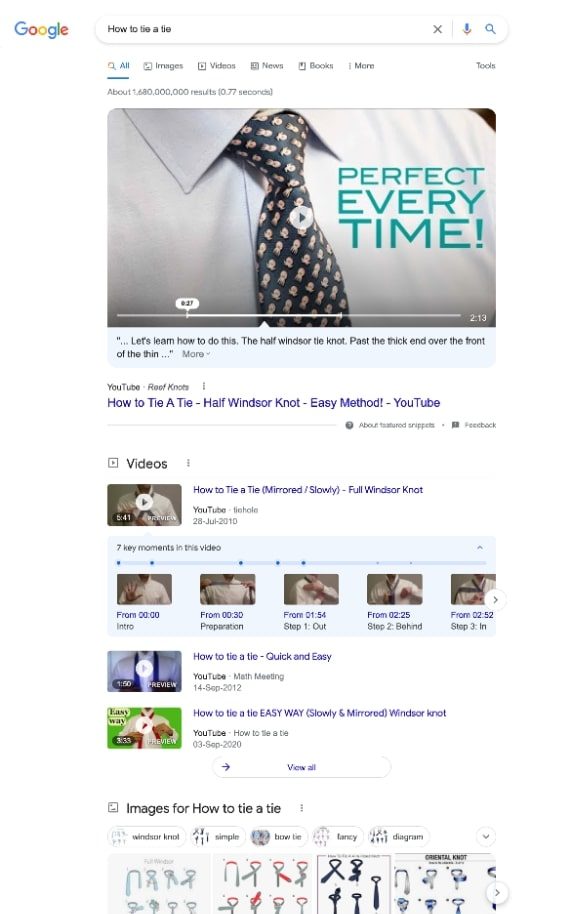
Notice anything? Almost 90% of the entire search engine results page (SERP) consists of visual content; video tutorials, graphical step-by-step representations, etc. In fact, the featured snippet is captured by a video too.
If you’re wondering why that’s the case for this keyword, it’s because visual content best serves the search intent for a keyword like “how to tie a tie”. And because Google understands this philosophy (having so much data) it knows visual content should be ranked higher in this case.
That’s how search intent influences search results.
The second question that arises now is: if you wanted to create content on this keyword, should you create a textual piece of content like SEOs usually do? And the answer is no. Unless you add some solid visual elements (videos, gifs, or graphics) your chances of ranking for a query like this are slim to none.
After all, who’d be interested in reading a 1500 word long guide that teaches tying a tie, when they could watch a 30-second video that teaches it step-by-step?
And that’s how search intent influences content creation.
At Flying Cat Marketing, we analyze search intent for hundreds of keywords as a part of our day-to-day work and we’ve guided many projects to success simply by getting search intent right.
So let’s start with the basics…
What is search intent?
Search intent (also known as user intent) is the reason behind a searcher’s query inside a search engine. It describes the objective that the searcher is trying to fulfill. For example, a searcher might be interested in some information or may want to buy something online.
As SEOs target a particular query/term inside search engines, it becomes vital to not only understand the search intent behind that query but also to create content that completely satisfies that intent so the searcher gets the answer they were looking for. It’s not just another SEO trend to follow but an essential ingredient of a successful SEO recipe.
Join 1,798 other SaaS founders to learn more about how to turn your website into your #1 growth channel. Join the newsletter
Why search intent matters more than anything
There are quite a few good reasons why it’s important to fully understand and fulfill the searcher’s intent in your content. Let’s take a look at those reasons:
1. Google’s algorithm cares about it
Google’s algorithm evaluates every page in their index with a variety of different signals and the majority of the signals are there to determine how well a particular page solves the search intent.
There’s tons of information in Google’s own shared patents that talks about the intent evaluation behind a searcher’s query. However, a simple explanation can be found in their search quality evaluator guidelines. Google uses very high-end technology to add layers of interpretations based on their analysis system:
- Dominant interpretation
- Common interpretation
- Minor interpretation
And all these interpretations are developed based on a series of factors such as location, language, query patterns, and other user-behavioral factors.
Thus Google, as the most dominant search engine, is smart enough to understand what you’re looking for when you type in the word ‘Apple’:
Is it the tech company?
Is it the fruit?
Could it be something else?
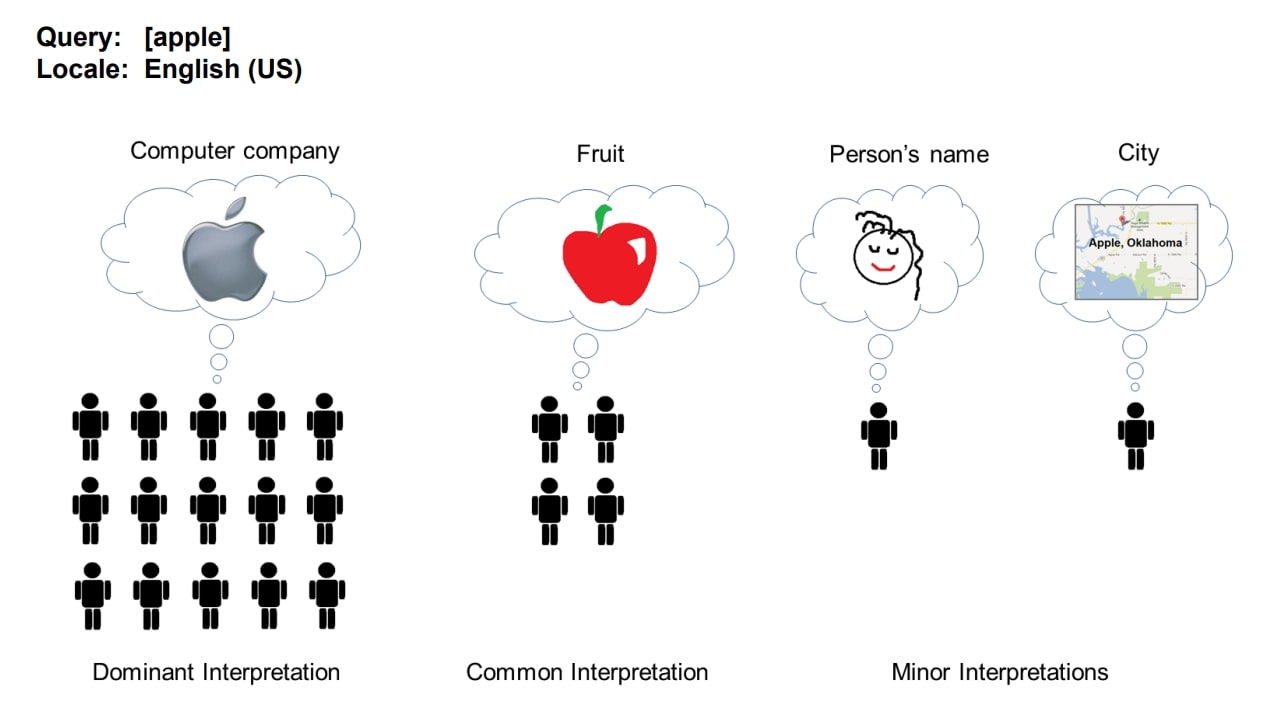

Image source: https://static.googleusercontent.com/media/guidelines.raterhub.com/en//searchqualityevaluatorguidelines.pdf
And based on Google’s own analysis of how satisfied a user is with a page in respect to their search query, it ranks pages in the search results. Knowing this, we can say that fulfilling search intent is directly correlated with higher rankings.
2. Helps your content to reach the target audience
Basically, assessing the search intent behind queries helps you answer two questions:
- What is it that the searcher wants?
- Who is looking for this solution?
The second part of the equation talks about the audience who’d be interested in searching for the solution that a particular query represents. This can help you see if your content marketing and SEO efforts are directed towards your target audience or not.
For example, if you’re a real estate agency that targets high profile investors, a keyword like “Real estate investing tips” isn’t what your target audience would search for because an experienced real estate investor won’t be interested in learning some generic investing tips from the internet. Instead, they’d be searching for terms like ‘hottest real estate markets’.
3. Helps you tap into various parts of the funnel
If we map the searcher’s intent to the buyer’s funnel, we’ll know that each category of search intent taps at least one stage of a buyer’s journey.
Although the length of the marketing funnel differs in industries, still the concept behind mapping various types of search intent (which we’ll be covering in detail in the next section) to funnel stages remains the same.
|
Marketing Funnel |
Search Intent |
|---|---|
|
Awareness |
Informational |
|
Interest |
Navigational |
|
Consideration |
Commercial investigation |
|
Conversion |
Transactional |
Thus segmenting the intent behind all your targeted keywords can help you capture your potential customers at each stage of the funnel and land you more opportunities for growing your business.
4. Allows you to forecast the results
SEO and content marketing are supposed to drive results and when you’re able to plot search intent against the content you’re serving to the searcher, you can forecast the end results.
For example, let’s say you sell fidget spinners online. Out of the following two, which keyword will convert better in your opinion:
- ‘What does a fidget spinner look like?’
- ‘Fidget spinner price’
The organic traffic received from the first search query won’t convert as well as the second.
Why?
- The search intent behind the first keyword is informational (searcher is gathering awareness about something).
- While for the second one it’s commercial (the searcher is ready to buy and is evaluating cost).
With the same framework implemented at scale, measurement of SEO KPIs and forecasting SEO results becomes possible.
5. Leads to better conversion rates
You can achieve significantly higher conversion rates provided you know what keywords are high-converting and drive business.
Again, tying your keyword’s search intent with the marketing funnel helps you differentiate awareness-driving keywords from conversion-driving keywords so you get the most out of your website’s organic traffic.
The four types of search intent
There can be many classifications of search intent in SEO however, we can broadly put any search intent into one of four major categories:
Informational
Informational search intent means the searcher is looking for information on any possible subject. This involves simple and straightforward questions like “What time is it right now in Barcelona?” as well as complex questions like “Why is football the most popular sport?” that require deep answers for intent fulfillment.
Some other examples would be:
- How old is Donald Trump?
- What is the net worth of Christiano Ronaldo?
- How does blockchain mining work?
Navigational
Navigational search intent means the searcher is looking for a specific solution. This means the searcher already knows what they’re looking for and is using Google to get there. Users searching with the brand name of a product inside Google are a good example of this.
Some examples of this would be:
- Starbucks near me
- Ahrefs keyword explorer
- Gymshark men collection
Commercial investigation
Commercial investigation search intent means the searcher is looking for information that directly facilitates the buying process. These can be details about a specific product or service, like pricing or alternative options.
Some the keyword examples of this would include:
- Ahrefs VS SEMrush
- Top restaurant in Barcelona
- Jordan lane price
Transactional
Transactional search intent means the searcher is in buying mode and is looking to purchase a specific product. Again, these keywords will include terms that clearly reflect the purchasing idea.
Examples of transactional queries would be:
- Buy Macbook Pro online
- Coupon for Amazon
- Affordable cleaning service
|
Search intent type |
Example |
|---|---|
|
Informational |
How to make a LinkedIn account? |
|
Navigational |
LinkedIn login page |
|
Commercial investigation |
LinkedIn sales navigator vs campaign manager |
|
Transactional |
LinkedIn sales navigator price |
How to determine search intent behind a keyword?
Determining the search intent behind keywords is not simple but it’s not rocket science either.
Instead of sharing some generic tips, we’d like to share some of the search intent analysis techniques that we use at Flying Cat Marketing for our own clients:
1. Decode the keywords
Often the search intent behind a keyword can be understood by just evaluating the keyword itself. If you put a set of keywords under analysis and focus on the words and phrases being used, you’ll notice there’s a pattern you can pick.
- Keywords with ‘what is’ and ‘how to’ are usually informational
- Keywords with any brand name (without a buy/price word) are usually navigational
- Keywords that contain comparisons or product details like ‘Price’ are usually commercial investigations.
- Keywords with ‘Buy’ or are entirely based on highly specific product names
|
Search intent |
Keyword pattern to look for |
|---|---|
|
Informational |
|
|
Navigational |
|
|
Commercial investigation |
|
|
Transactional |
|
This kind of word-mapping can help you identify the intent behind some really obvious keywords.
2. Check ‘SERP reliability’ and fluctuations
The ranking results inside Google for any particular query aren’t static. They change and fluctuate regularly since Google never stops assessing new pages that it crawls and indexes regularly.
So rather than checking a keyword over a given period of time, you should look at historical ranking data. Several keyword research tools can give you the history behind the rankings for a particular query, the most famous being Ahrefs keyword explorer.
Just type in the keyword inside Ahrefs keyword explorer and scroll down to the position history graph.
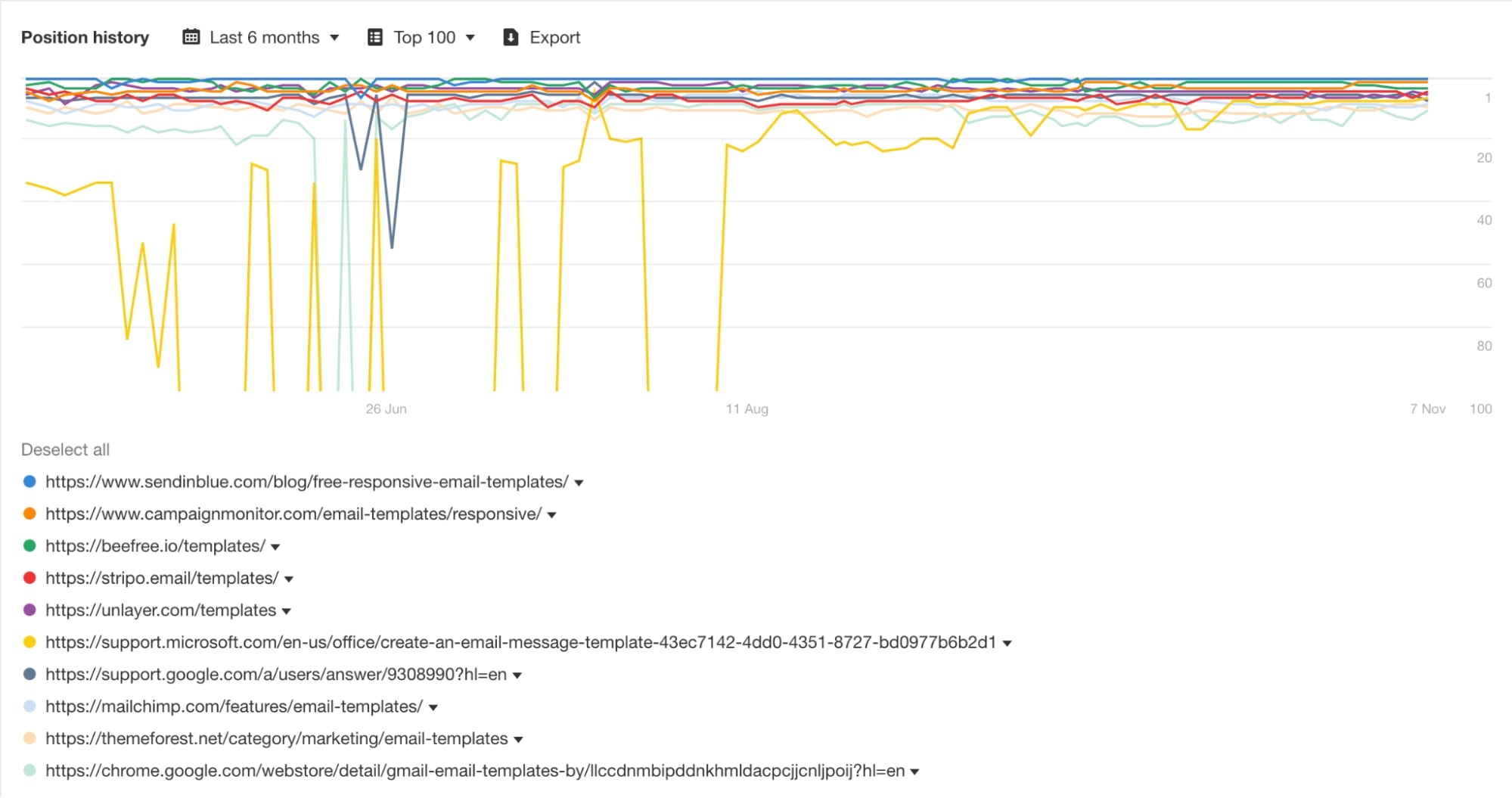

This brings a number of possibilities for you to analyze before picking a keyword to target:
|
Rankings Fluctuation |
Intent clarity |
Ranking difficulty |
Ranking sustainability |
|---|---|---|---|
|
High |
Low |
Low |
Low |
|
Low |
High |
High |
High |
Taking this historical data behind a keyword’s rankings into account is especially helpful when the keyword is complex making it difficult to decode its intent.
3. Conduct a SERP analysis
The best technique for assessing the search intent behind a keyword is to analyze the SERP for that keyword.
The SERP structure you’d see for any keyword is the way it is for a reason. Meaning those websites fulfilled the majority of the signals Google looks at before ranking a page organically, with a big portion of this based on the ability to fulfill search intent.
Let’s further break this down into actionable steps:
1. Visit the top-ranking pages.
The best place to start is by visiting some of the top-ranked pages to try and analyze them critically with your SEO lens on. Try to look for patterns in the content structure, content flow, what content is there, what is the role of visual content, how are the keywords utilized within the body of the content (headings, subheadings, etc.). If you’re able to find an arrangement that correlates to that page’s rankings in the search engine, that’d be ideal.
2. Look at the different SERP features.
There are SERP features like featured snippets, products carousel, and the ‘People also ask’ box. All of these can be looked at to fully understand the intent behind a keyword. For example, most of the featured snippets—the sort of we see for definitions are taken by informational keywords while product carousels reflect a transactional intent. Similarly, the ‘People also ask’ boxes can be reviewed to understand the pain points a searcher usually has when searching a particular query.
For example, if we run a search for the keyword “why blockchain is the future” the ‘People also ask’ box shows us that the search intent for this query requires us to cover topics like:
- How will blockchain be used in the future?
- What is blockchain technology?
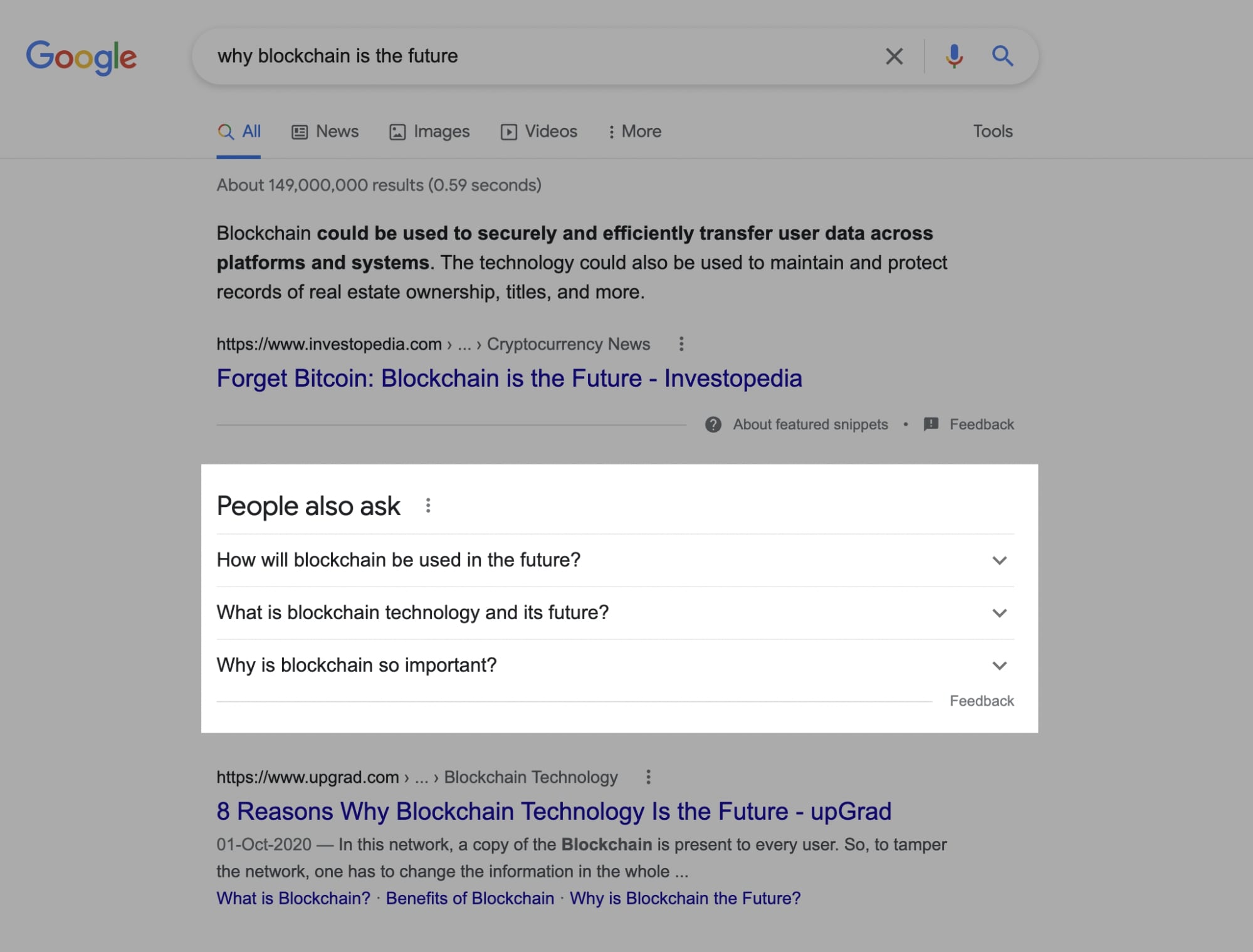

3. Run a content gap analysis at the page-level
The last SERP review tactic for analyzing search intent is to run a content gap analysis at the page level. This tactic is used to find any unfilled gaps in the piece of content that’s currently ranking well in the search engine and tap those untapped ideas behind a keyword/topic to fully cover the intent behind it.
For example, let’s use Ahrefs’ content gap analysis tool to put some of the top-ranking pages for the keyword ‘email templates’ in there:
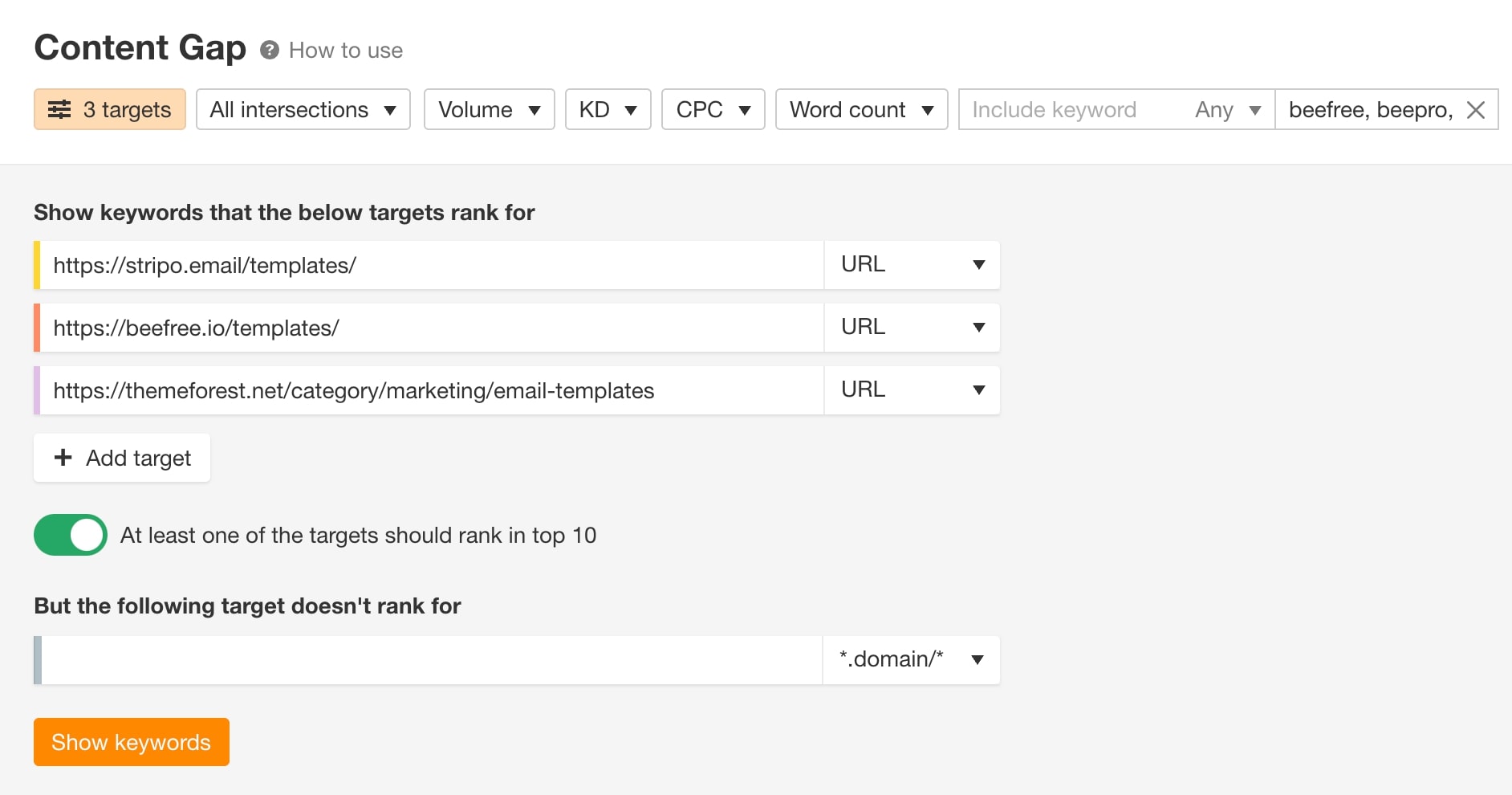

You’ll find keywords that are similar to the keyword we just searched for:
- Html email template
- Email templates design
At the same time, some other keywords tools represent a wholly different intent.
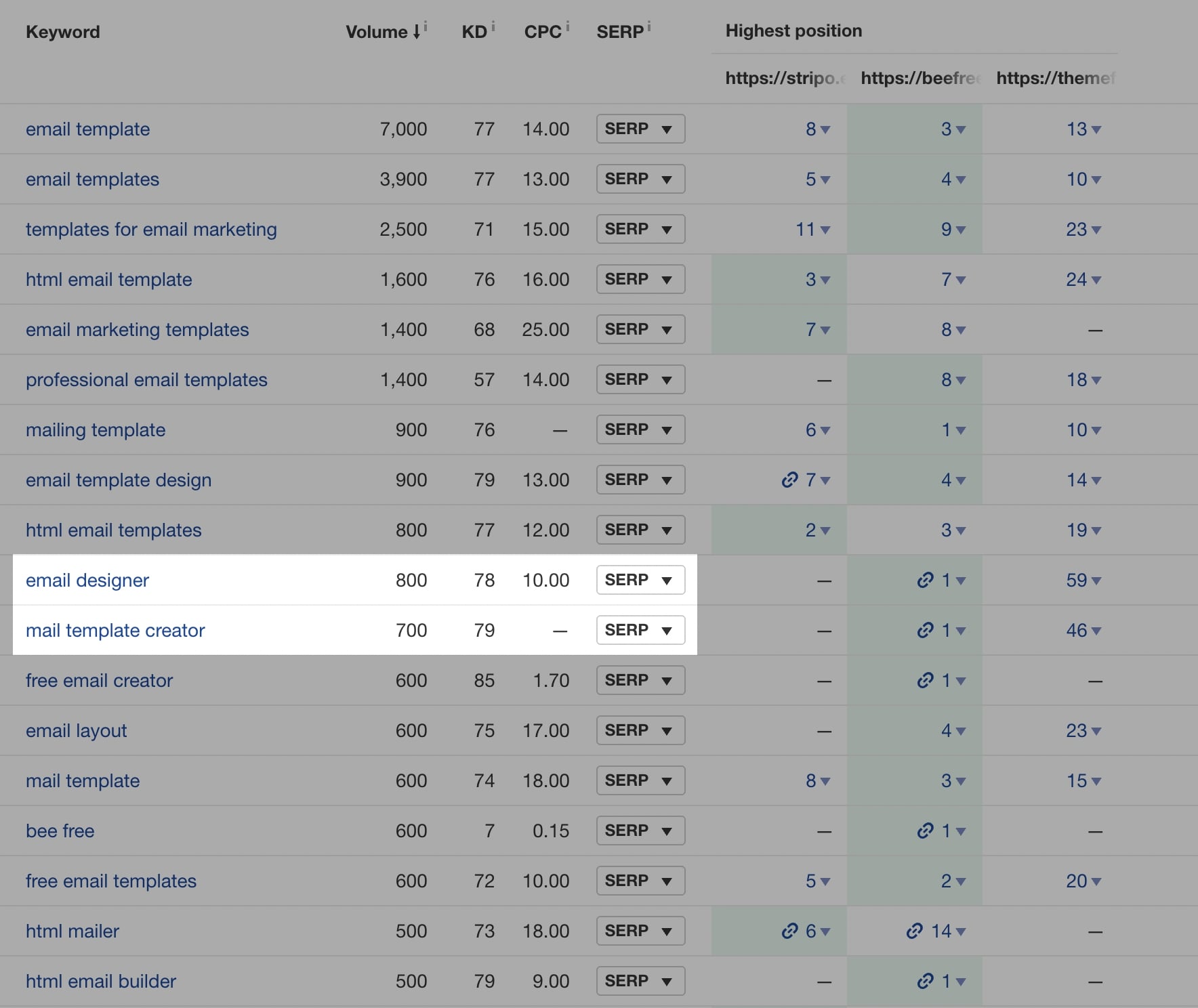

Both of these keywords “Email designer” and “Mail template creator” represent a tool/software not instead of a template. Thus we can conclude that a person looking for email templates would also be searching for a designer/creator tool for building the HTML template.
4. Determine the “3 C’s of search intent”
While researching for the searcher’s intent one thing you’d need to check specifically is the make-up of the content that’s already ranking in the SERPs. If you find some pattern in the content composition for any particular query you’ll most probably need to match that composition to some extent in order to perform well.
When we talk about the composition/make-up of content, we’re basically talking about observing three things:
1. Content type
This touches on the type of content you see ranking for a search query. Examples include:
- Blog posts
- Landing pages
- Ecommerce pages
Example: If you see 8/10 eCommerce pages ranking for a keyword “Nike air max”, targeting a blog post for ranking on it won’t be a good idea.
If you see a specific type of content being dominant inside search results for a particular query, chances are that the search intent is served best with that type of content and in order to rank well, you’d need to invest in the same content type.
2. Content format
This talks about the different formats there are for pages ranking on top of Google for any search query. Some of the examples in this regard are:
- How to guides
- Listicle posts
- Opinion articles
Example: If you see a dominance of ‘how to’ articles for a keyword like “SEO measurement”, going with a listicle post might not be the best way to present your content.
3. Content angle/Pain-points
By angle, we refer to pain points that your content touches upon to provide that unique factor that would attract the searcher towards your content as well as keep them on the page.
Example: If you search for a keyword like “most affordable snowboards” you’ll see some pages showing a specific price in the titles.
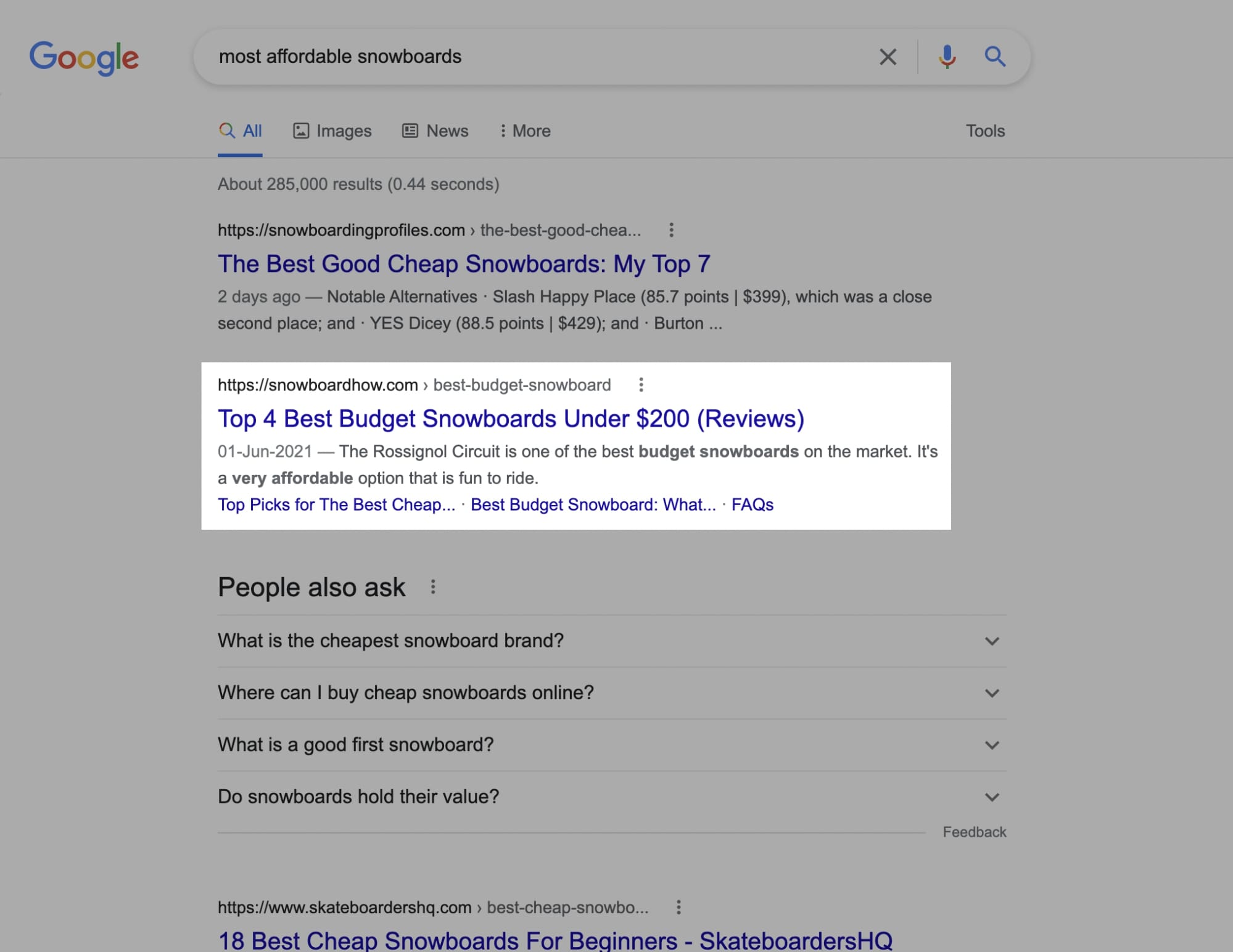

Tactics like these help your content to match the pain points of the searcher and hooks them up with the relevancy they were looking for.
Best practices for using search intent in content
1. Optimize UX using search intent
Serving the user the greatest experience possible is necessary is the end goal for them to take your desired action; converting into a customer, subscribing to your email list, requesting a demo, etc.
Utilizing search intent in your content strategy, you have to ensure that the identification of search intent facilitates user experience.
For example, a person searching for something demonstrational like “how to change a flat tire” would expect some sort of graphical presentation or video rather than just blocks of text.


Providing the finest experience to your target audience through your content (let it be audio, video, or written word) will help you get the most out of them.
2. Creating content for every stage of the funnel
Whenever we talk about marketing, there’s a funnel that the customer goes through. Starting from awareness about the product/company and ending on conversion when they buy a product from a company. That’s how a customer completes their cycle.
The length and complexity of these funnels might differ from industry to industry but their existence is universal.
When putting search intent into action, identifying and mapping the intent behind a keyword to its corresponding area of the marketing funnel is important. It helps with segmenting the keywords/topics into ideas that cover the entire funnel and contribute to turning the visitor into a customer.
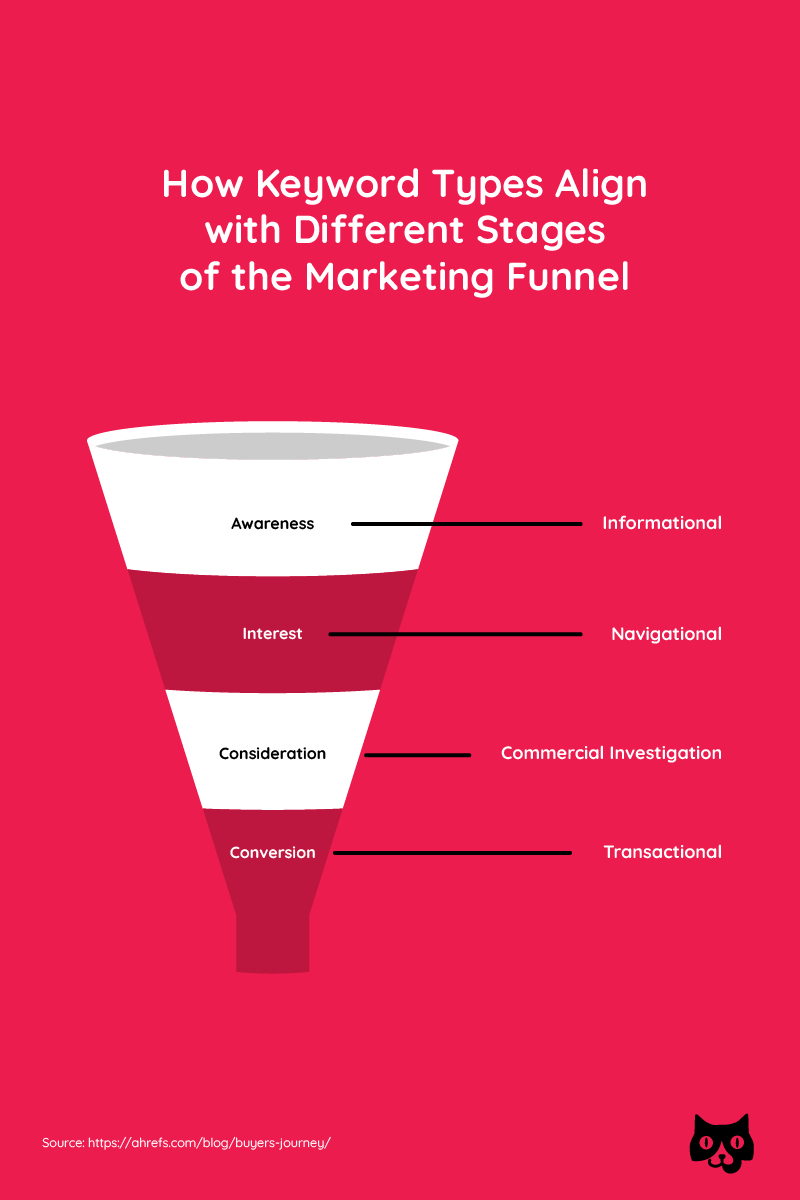

3. Improve existing content with search intent
Under-performing content can have various causes. Oftentimes content is optimized for the wrong search intent OR the search intent has changed.
Re-evaluating the search intent can help you update content to make it perform better from an SEO perspective. For re-evaluation of search intent behind a keyword, or identifying the shifts in search intent, the two useful keyword research tools are:
- Ahrefs keyword explorer – to draw a clear picture of rankings history
- Google trends – to draw a broad picture of search trends
4. Optimize commercial pages
Commercial pages, also known as ‘money pages’, are pages meant for conversions; turning visitors into paying customers. These are usually landing pages with content targeting transactional search intent. For example, product/service pages.
With awareness about the right search intent behind a keyword, one can optimize the copy and the call-to-actions better for their commercial pages and thus make significant improvements in their conversion rates.
5. Capture navigational queries
Going advanced in search intent analysis, sometimes you can find gaps in the search intent for one broad keyword and address the missing intent in your content strategy. It’s a great way to capture navigational queries that were originally for a specific product/brand. By hitting a unique angle, you can capture a portion of it.
A really good example of this would be from Backlinko. If you search the term “Google search console” a few top of the results are Google’s own pages. And it makes sense because this keyword clearly shows that the searcher wants to reach the search console’s page directly and nowhere else.
However, another side of the intent here is that one might be searching for ‘Google search console’ but not know how to use it. So a guide that educates the searchers for that tool would be needed. That’s what Brian Dean from Backlinko identified and guess what? He was right.


Brian Dean created a fully-fledged guide on Google search console to educate the searcher on how to use this tool from beginner to advanced level. That article now generates over 2500 visitors a month. It’s obvious that this page isn’t ranking first for the main keyword ‘Google search console’ but it’s highly dominant on many other variations like Google search console guide.
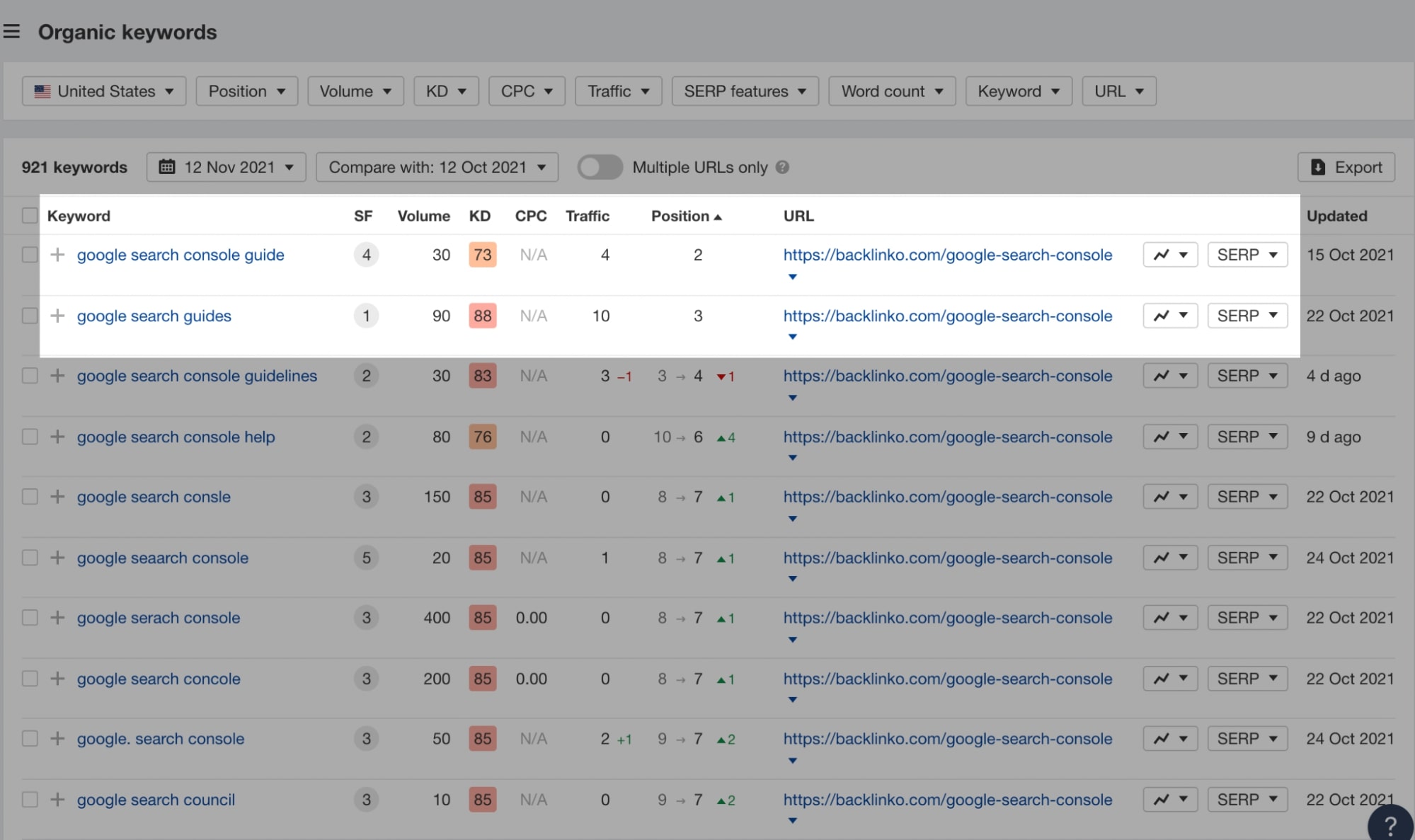

So with some smart research and only a small shift in search intent, Backlinko is now benefiting from thousands of organic visitors who were initially only meant for Google search console’s page.
Join 1,798 other SaaS founders to learn more about how to turn your website into your #1 growth channel. Join the newsletter
Search intent case studies: two real examples to learn from
1. Ahrefs landing page amendments drove +1600% more traffic
Initially when Ahrefs wanted to rank for the keyword “backlinks checker” they did so by targeting a landing page that looked like this:
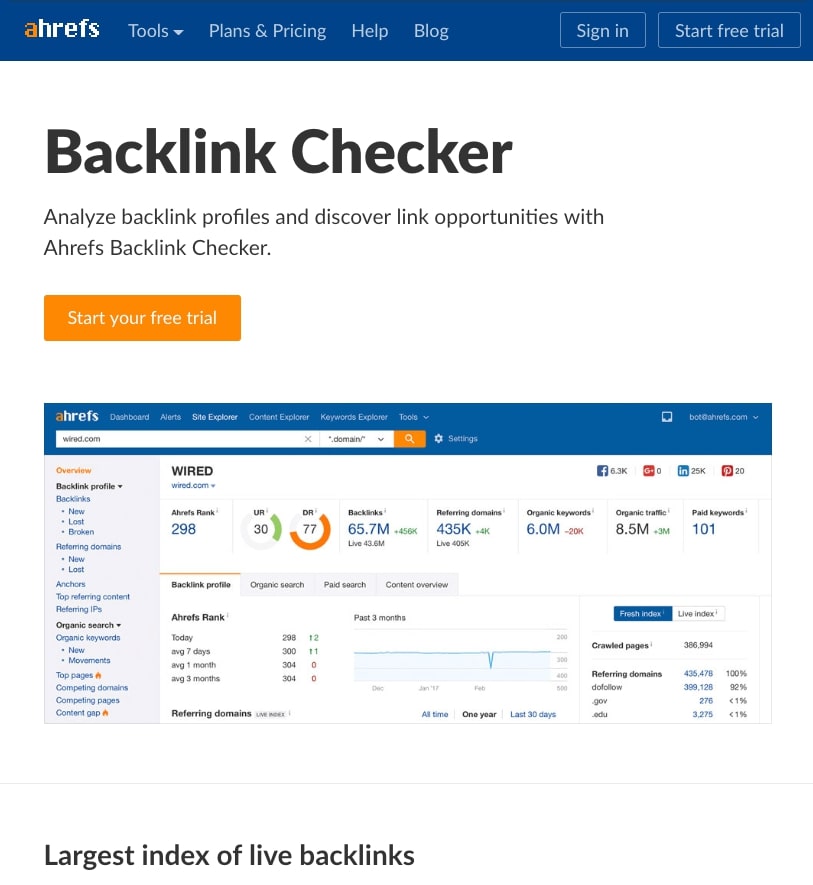

Although this page was strong from an on-page SEO perspective and Ahrefs contained a solid backlink profile, it never ranked higher than 5th or 6th position for its targeted keyword. Here’s what the position history looked like during that time:
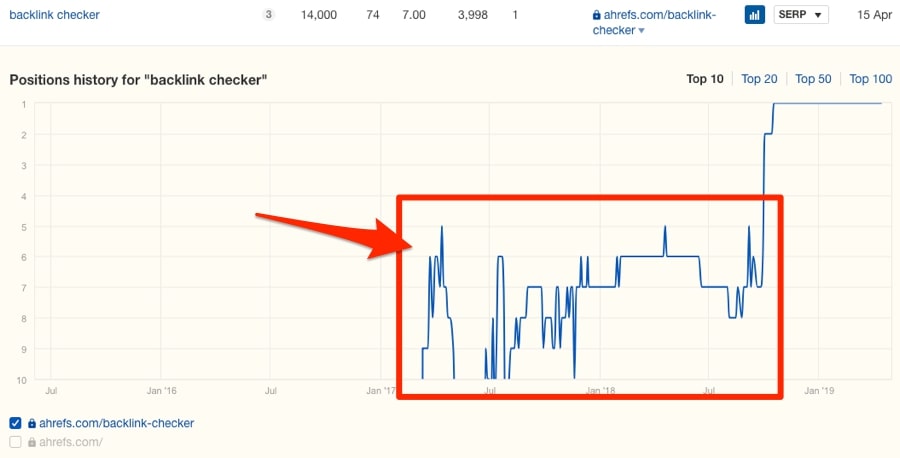

It was only after they analyzed the search intent for this keyword deeply that they realized what they’d done wrong.
Looking closely at the top-ranking results, they noticed searchers are looking for a tool where they can directly add the URL they want to check the backlinks for and get the data. While Ahrefs page was pushing them down the funnel by offering a free trial of the product.
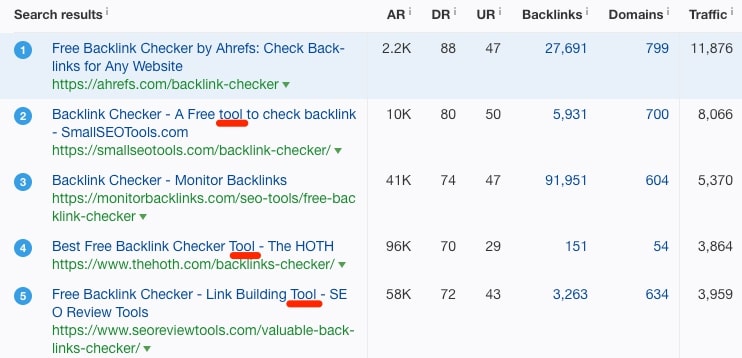

By doing this, they turned their targeted page into a FREE backlink checker tool that offered limited data for free. This is what the new design looked like:
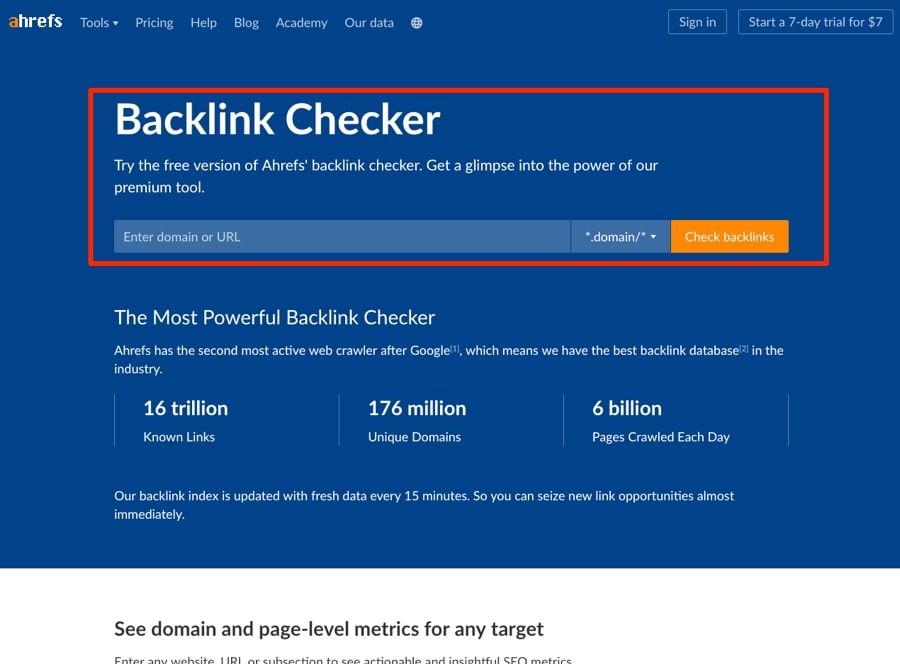

The result? Their traffic sky-rocketed in a matter of weeks and continues to grow.
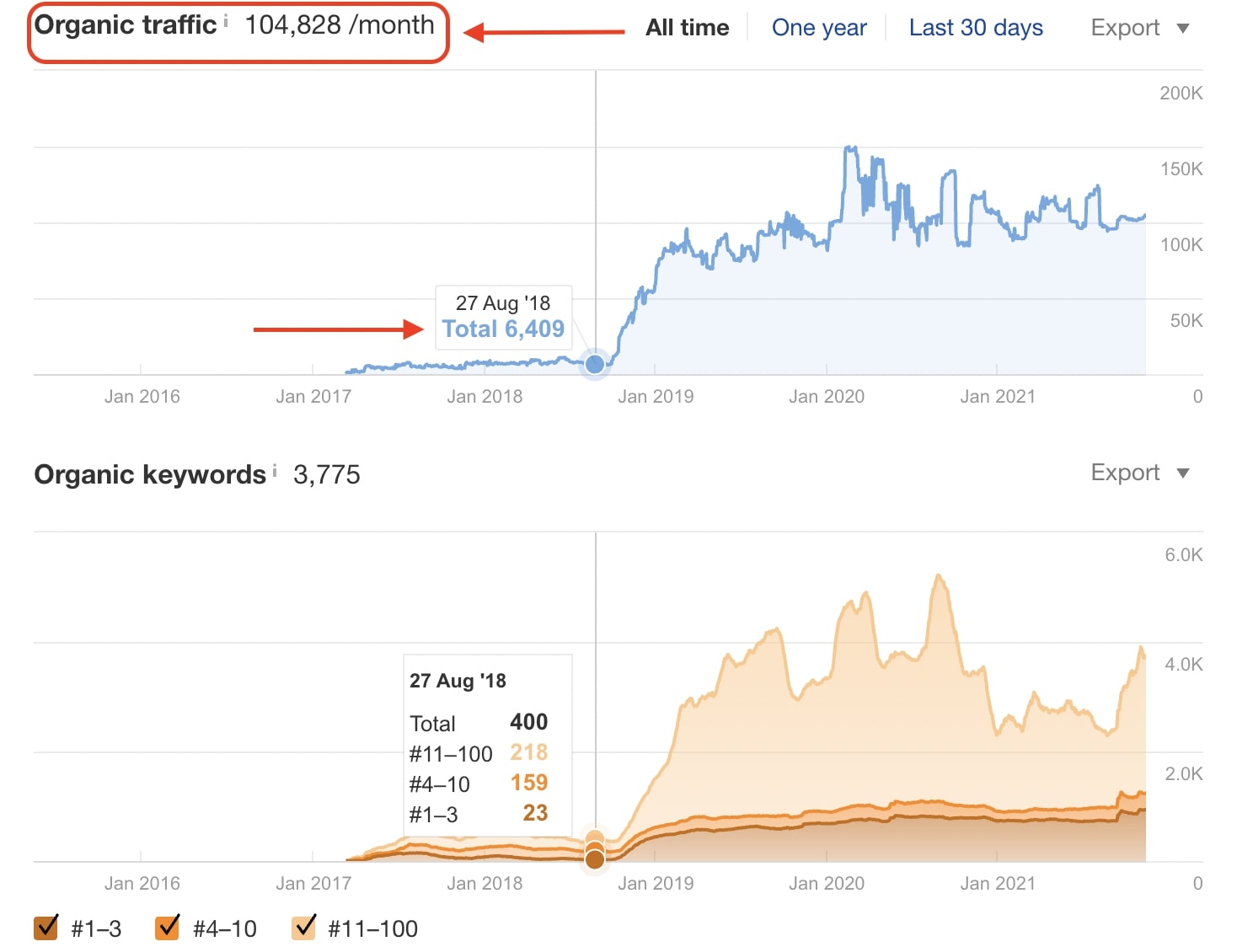

2. Backlinko’s winning the #1 spot for keyword “SEO Strategy”
Brain Dean from Backlinko wanted to rank for the term “SEO strategy” and to do so he created a page that looked like this:


Image source: https://api.backlinko.com/app/uploads/2019/07/backlinko-seo-strategy-case-study.webp
Although the page was a 100% fit from an on-page perspective, also attracting tons of backlinks and social shares, it never made it to even the first page of Google, let alone the top 3 results.
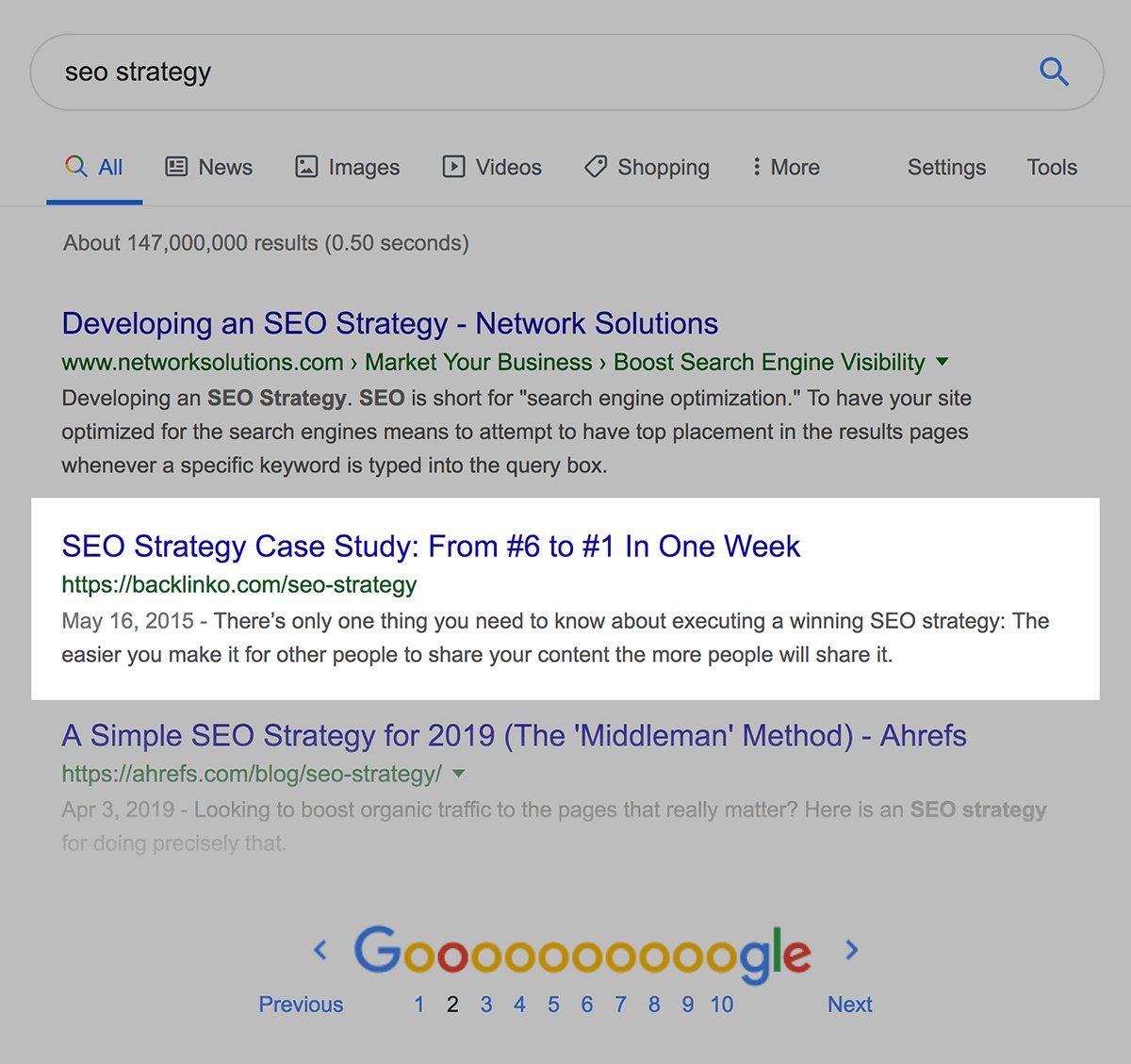

Image source: https://api.backlinko.com/app/uploads/2019/07/seo-strategy-page-two-ranking.webp
However, Brian Dean then took a closer look at the SERP and it revealed an interesting story.
Most of the pages ranking for the keyword ‘SEO strategy’ are ‘how to’s’ or ‘guides’ sort of articles that walk the reader through the process of building an SEO strategy in general with a higher-level approach.
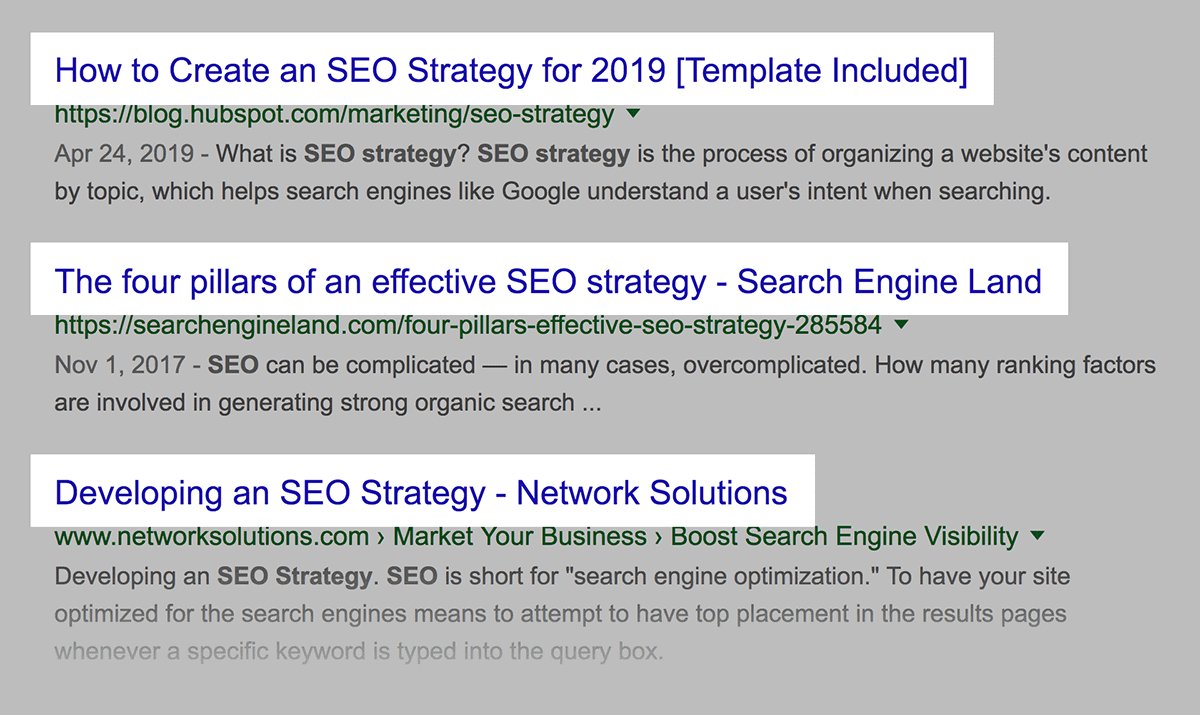

Image source: https://api.backlinko.com/app/uploads/2019/07/seo-strategy-high-level-approach-results.webp
So the searcher is looking for a complete guide with a general approach, while the article published by Brian only covered the SEO strategy involved in one project since it was a case study.
As soon as Brian noticed this big mismatch between what the searcher wanted and what he was being delivered, he went on to re-create this page and turned it into a ‘how to’ post. This is what the new page looked like:
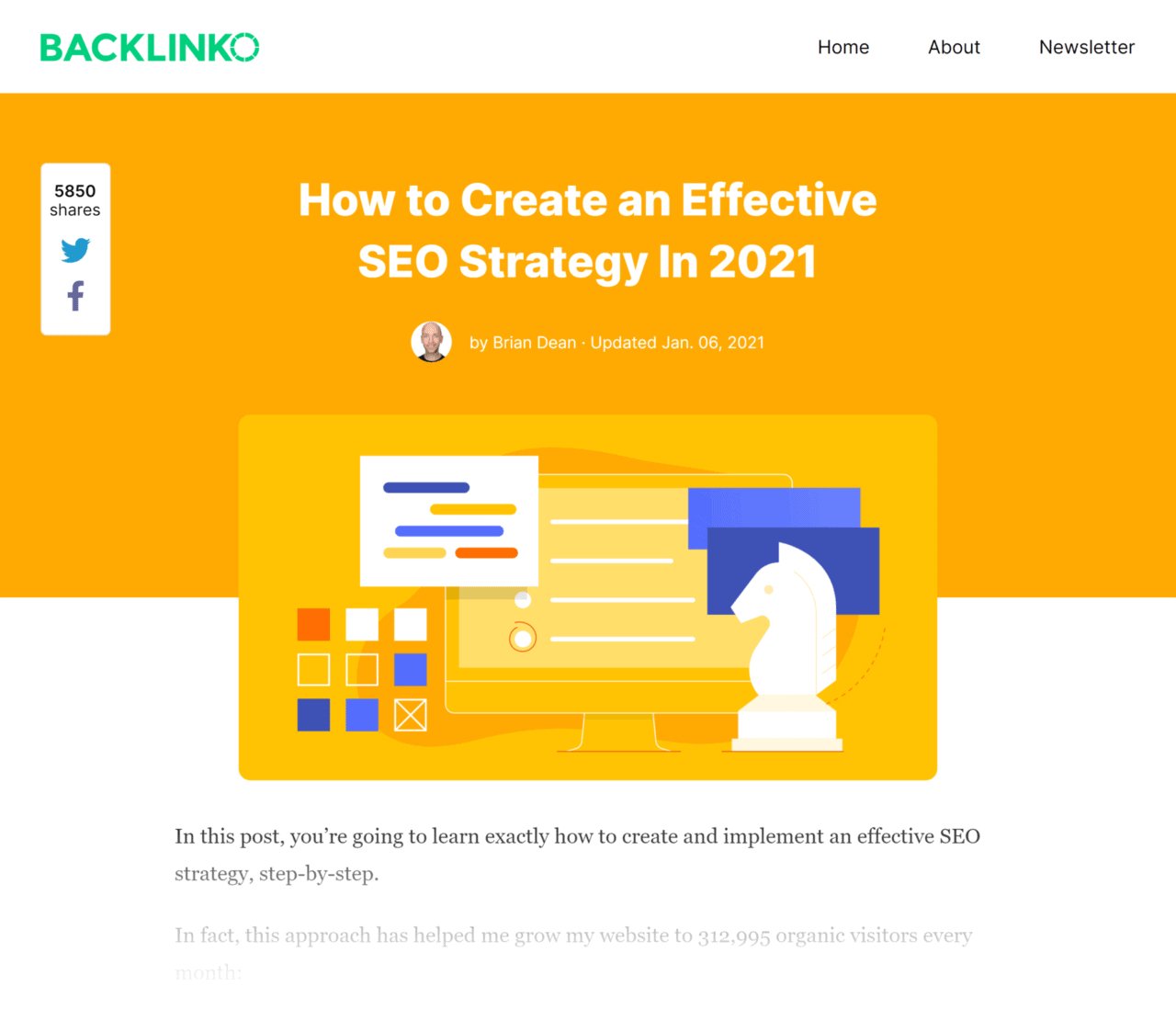

Image source: https://api.backlinko.com/app/uploads/2021/01/backlinko-seo-strategy-2021-1280×1098.webp
The results in this case? Backlinko’s article jumped all the way to the #1 spot in rankings for the keyword “SEO strategy” and even today ranks in the top 3:


Image Source: https://api.backlinko.com/app/uploads/2021/02/google-serp-seo-strategy-1280×961.webp
Key takeaways for understanding and leveraging search intent
Search intent is one of the most important ranking factors for understanding and optimizing content. Fulfilling search intent doesn’t only help rankings but also satisfies the user with their exact needs, therefore, increasing the chances of them converting into customers.
Although tricking search engines like Google into higher rankings isn’t easy today. However, if you’re somehow able to trick them with some SEO hacks and reach the top of the first page without fulfilling search intent, it won’t take long for them to identify that and take your website down.
So for great long-term rankings, it’s necessary to fulfill the searcher’s intent in your SEO strategy. Here’s a quick recap of everything that you need to do:
- Understand the philosophy behind a searcher’s query and map it to your provided solution.
- Study the SERPs religiously and look for patterns to determine the content’s angle/format/type.
- Look for keyword’s historical data to develop a holistic understanding of search intent behind keywords.
- Search intent is the backbone of your SEO success and thus should be the foundation of your content strategy.
- Be creative in your approach to put search intent to use in your content strategy and feel free to experiment with it.
- Map search intent to the entire buyer’s journey in pieces and facilitate user experience to enhance conversions.
Frequently asked questions about search intent
1. What are the 3 common types of search intent?
The 3 common types of search intent are informational, navigational, and transactional. Each of these search intents represents different motives behind the search and thus searcher’s expectations differ as well.
2. How does search intent work?
Google as a search engine assesses the reason a searcher is searching for something based on a series of signals. Primarily Google’s advanced semantic understanding of keywords helps it understand and interpret what a searcher would exactly be looking for when typing in a query.
3. What is the difference between search intent and search volume?
Search intent is the reason/purpose behind an online search made in search engines like Google. While search volume is how many times a specific keyword is being searched inside these search engines on a monthly basis.
4. What is the difference between a person searching for a specific term and a person with specific intent?
Different terms and phrases can mean the same thing, it’s the intent behind a searcher’s query that draws a differentiating line. For example, the two keywords “Christmas emails ideas” and “Christmas email examples” would turn the same content inside search results. However, if you search for “Christmas email templates” the results are totally different. And it’s primarily because when looking for ideas/examples the searcher is looking for inspiration and when searching for a template, the searcher wants to get started right away.
